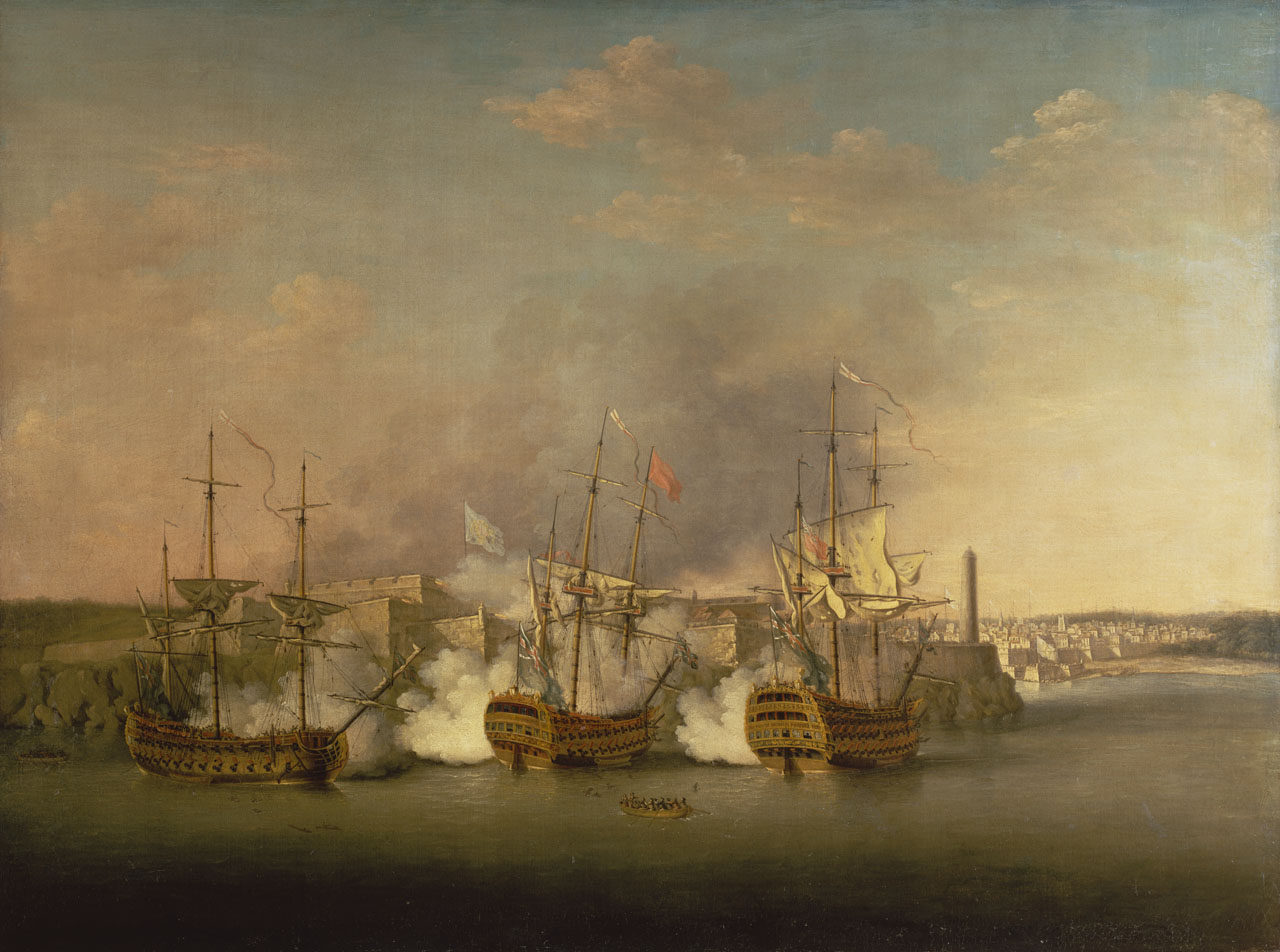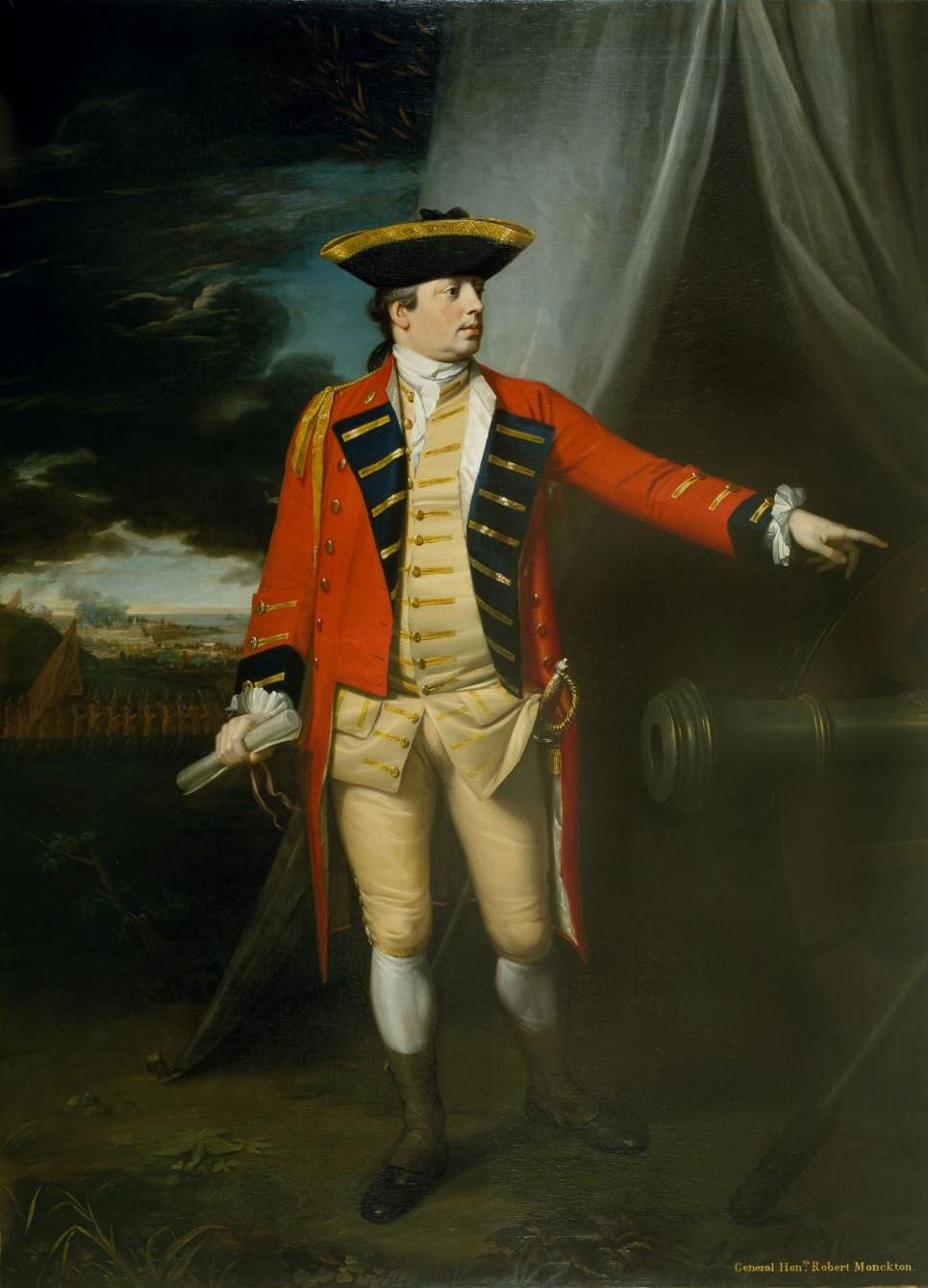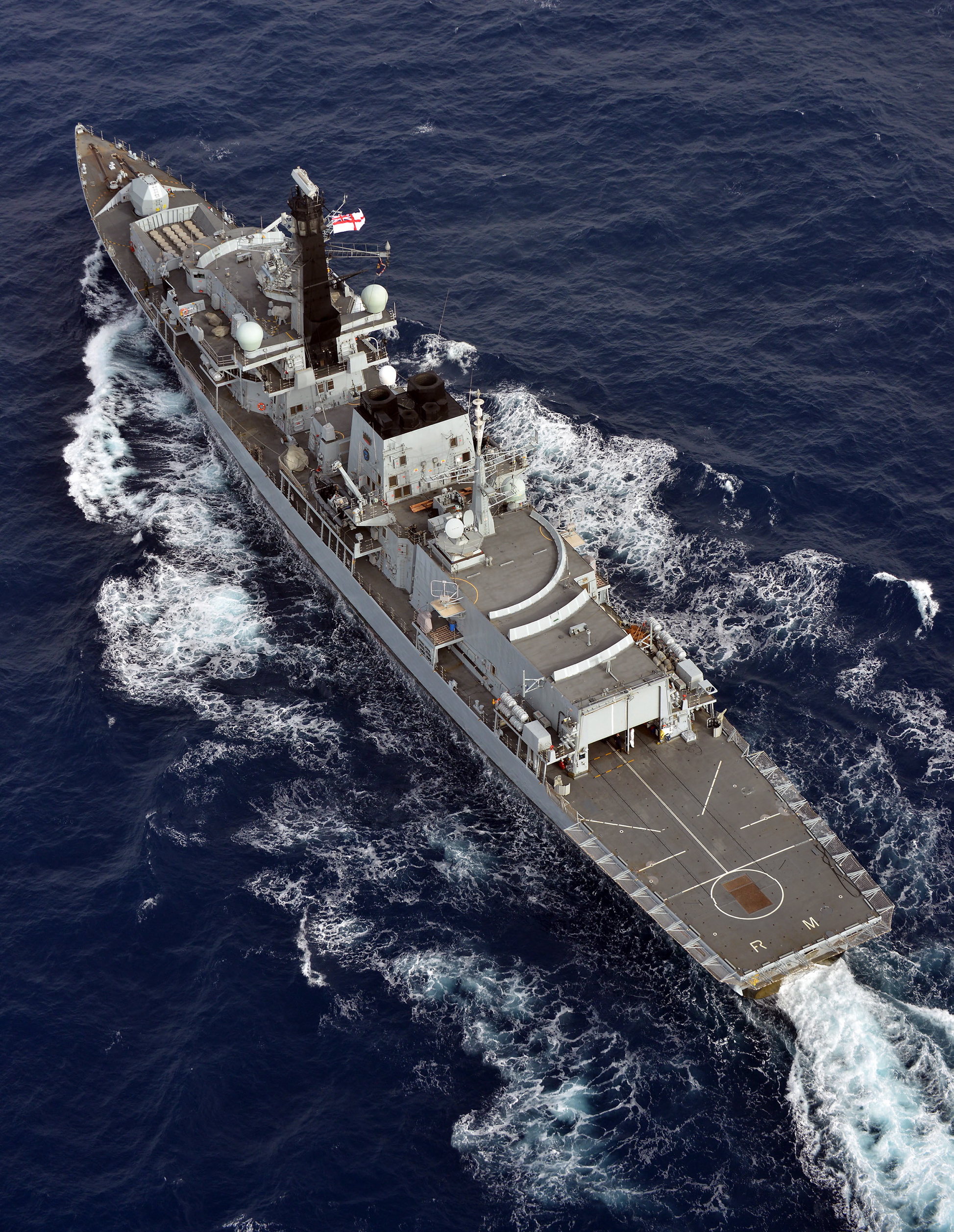|
HMS Marlborough
Six warships of the Royal Navy have been named HMS ''Marlborough'' after the Duke of Marlborough: * , a second rate, renamed ''Marlborough'' 1706; fought in the Seven Years' War; present in Sir George Pocock's fleet at the taking of Havana from the Spanish 1762; foundered at sea 1762. * , a third rate built 1767; fought in the American Revolutionary War; heavily damaged in the Battle of the Glorious First of June 1794; wrecked 1800. * , a third rate built 1807; broken up 1835. * , a first rate screw ship built 1855; renamed ''Vernon II'' 1904; sank on her way to being broken up 1924. * , an built 1912; fought in the Battle of Jutland 1916; decommissioned 1932. This ship evacuated surviving members of the Russian royal family, the Romanovs, from the Crimea during the Russian Civil War. * , a Type 23 frigate launched 1989; sold to the Chilean Navy 2008; renamed ''Almirante Condell''. HMS ''Marlborough'' was also an Electrical Training shore station in Eastbourne during and shortly ... [...More Info...] [...Related Items...] OR: [Wikipedia] [Google] [Baidu] |
Romanovs
The House of Romanov (also transcribed Romanoff; rus, Романовы, Románovy, rɐˈmanəvɨ) was the reigning imperial house of Russia from 1613 to 1917. They achieved prominence after the Tsarina, Anastasia Romanova, was married to the First Tsar of Russia, Ivan the Terrible. The house became ''boyars'' (the highest rank in Russian nobility'')'' of the Grand Duchy of Moscow and later of the Tsardom of Russia under the reigning Rurik dynasty, which became extinct upon the death of Tsar Feodor I in 1598. The Time of Troubles, caused by the resulting succession crisis, saw several pretenders and imposters ( False Dmitris) fight for the crown during the Polish–Muscovite War of 1605–1618. On 21 February 1613, a ''Zemsky Sobor'' elected Michael Romanov as Tsar of Russia, establishing the Romanovs as Russia's second reigning dynasty. Michael's grandson Peter I, who established the Russian Empire in 1721, transformed the country into a great power through a series of war ... [...More Info...] [...Related Items...] OR: [Wikipedia] [Google] [Baidu] |
Glorious First Of June
The Glorious First of June (1 June 1794), also known as the Fourth Battle of Ushant, (known in France as the or ) was the first and largest fleet action of the naval conflict between the Kingdom of Great Britain and the First French Republic during the French Revolutionary Wars. The action was the culmination of a campaign that had criss-crossed the Bay of Biscay over the previous month in which both sides had captured numerous merchant ships and minor warships and had engaged in two partial, but inconclusive, fleet actions. The British Channel Fleet under Admiral Lord Howe attempted to prevent the passage of a vital French grain convoy from the United States, which was protected by the French Atlantic Fleet, commanded by Rear-Admiral Villaret-Joyeuse. The two forces clashed in the Atlantic Ocean, some west of the French island of Ushant on 1 June 1794. During the battle, Howe defied naval convention by ordering his fleet to turn towards the French and for each of his ves ... [...More Info...] [...Related Items...] OR: [Wikipedia] [Google] [Baidu] |
Battle Of The Saintes
The Battle of the Saintes (known to the French as the Bataille de la Dominique), also known as the Battle of Dominica, was an important naval battle in the Caribbean between the British and the French that took place 9–12 April 1782. The British victory was considered their greatest over the French during the American Revolutionary War. The British fleet under Admiral Sir George Rodney defeated a French fleet under the Comte de Grasse, forcing the French and Spanish to abandon a planned invasion of Jamaica. The battle is named after the Îles des Saintes, a group of small islands between Guadeloupe and Dominica in the West Indies. The French had blockaded the British Army at Chesapeake Bay the year before, during the Siege of Yorktown, and supported the eventual American victory in their revolution. This battle, however, halted their momentum and had a significant effect on peace negotiations to end the war. The French suffered heavy casualties at the Saintes and many were t ... [...More Info...] [...Related Items...] OR: [Wikipedia] [Google] [Baidu] |
Battle Of Cape St
A battle is an occurrence of combat in warfare between opposing military units of any number or size. A war usually consists of multiple battles. In general, a battle is a military engagement that is well defined in duration, area, and force commitment. An engagement with only limited commitment between the forces and without decisive results is sometimes called a skirmish. The word "battle" can also be used infrequently to refer to an entire operational campaign, although this usage greatly diverges from its conventional or customary meaning. Generally, the word "battle" is used for such campaigns if referring to a protracted combat encounter in which either one or both of the combatants had the same methods, resources, and strategic objectives throughout the encounter. Some prominent examples of this would be the Battle of the Atlantic, Battle of Britain, and Battle of Stalingrad, all in World War II. Wars and military campaigns are guided by military strategy, whereas b ... [...More Info...] [...Related Items...] OR: [Wikipedia] [Google] [Baidu] |
Siege Of Havana
The siege of Havana was a successful British siege against Spanish-ruled Havana that lasted from March to August 1762, as part of the Seven Years' War. After Spain abandoned its former policy of neutrality by signing the family compact with France, resulting in a British declaration of war on Spain in January 1762, the British government decided to mount an attack on the important Spanish fortress and naval base of Havana, with the intention of weakening the Spanish presence in the Caribbean and improving the security of its own North American colonies. A strong British naval force consisting of squadrons from Britain and the West Indies, and the military force of British and American troops it convoyed, were able to approach Havana from a direction that neither the Spanish governor nor the Admiral expected and were able to trap the Spanish fleet in the Havana harbour and land its troops with relatively little resistance. The Spanish authorities decided on a strategy of del ... [...More Info...] [...Related Items...] OR: [Wikipedia] [Google] [Baidu] |
Invasion Of Martinique (1762)
The British expedition against Martinique was a military action that took place in January and February 1762. It was part of the Seven Years' War. Background After the surrender of Dominica to a British expeditionary force, the French in Martinique fully expected the same expedition to head into their direction. Accordingly, they took measures for their defense. The French force in Martinique consisted of 1,200 regulars, 7,000 local militia and 4,000 hired privateersmen. Furthermore, the mountainous nature of the island made it rather easy to defend. The neighbouring British islands did what they could to help the mother-country: * Antigua sent blacks and part of her old garrison, the 38th Regiment of Foot, which had not left her since Queen Anne's day; * Barbados raised 500 black and 500 white men, which were the more acceptable since that island was the rendezvous for the expedition. The first troops to arrive in Carlisle Bay were a detachment from Belle-Isle, Newfoundlan ... [...More Info...] [...Related Items...] OR: [Wikipedia] [Google] [Baidu] |
Battle Honour
A battle honour is an award of a right by a government or sovereign to a military unit to emblazon the name of a battle or operation on its flags ("colours"), uniforms or other accessories where ornamentation is possible. In European military tradition, military units may be acknowledged for their achievements in specific wars or operations of a military campaign. In Great Britain and those countries of the Commonwealth which share a common military legacy with the British, battle honours are awarded to selected military units as official acknowledgement for their achievements in specific wars or operations of a military campaign. These honours usually take the form of a place and a date (e.g. "Cambrai 1917"). Theatre honours, a type of recognition in the British tradition closely allied to battle honours, were introduced to honour units which provided sterling service in a campaign but were not part of specific battles for which separate battle honours were awarded. Theatre h ... [...More Info...] [...Related Items...] OR: [Wikipedia] [Google] [Baidu] |
Chilean Navy
The Chilean Navy ( es, Armada de Chile) is the naval warfare service branch of the Chilean Armed Forces. It is under the Ministry of National Defense. Its headquarters are at Edificio Armada de Chile, Valparaiso. History Origins and the Wars of Independence (1817–1830) The origins of the Chilean Navy date back to 1817, when General Bernardo O'Higgins prophetically declared after the Chilean victory at the Battle of Chacabuco that a hundred such victories would count for nothing if Chile did not gain control of the sea. This led to the development of the Chilean Navy, and the first legal resolutions outlining the organization of the institution were created. Chile's First National Fleet and the Academy for Young Midshipmen, which was the predecessor of the current Naval Academy, were founded, as well as the Marine Corps and the Supply Commissary. The first commander of the Chilean Navy was Manuel Blanco Encalada. Famous British naval commander Lord Cochrane, who former ... [...More Info...] [...Related Items...] OR: [Wikipedia] [Google] [Baidu] |
Type 23 Frigate
The Type 23 frigate or Duke class is a class of frigates built for the United Kingdom's Royal Navy. The ships are named after British Dukes, thus leading to the class being commonly known as the Duke class. The first Type 23, , was commissioned in 1989, and the sixteenth, was commissioned in June 2002. They form the core of the Royal Navy's destroyer and frigate fleet and serve alongside the Type 45 destroyers. They were designed for anti-submarine warfare, but have been used for a range of uses. Twelve Type 23 frigates remain in service with the Royal Navy, with three vessels having been sold to the Chilean Navy, and one being retired in 2021. The Royal Navy's Type 23 frigates will be replaced by the Type 26 Global Combat Ship and the Type 31 frigate. it is anticipated that HMS ''St Albans'' will be the last to retire from the Royal Navy, in 2035. Development When first conceived in the late 1970s, the Type 23 was intended to be a light anti-submarine frigate with a towed ... [...More Info...] [...Related Items...] OR: [Wikipedia] [Google] [Baidu] |
Russian Civil War
, date = October Revolution, 7 November 1917 – Yakut revolt, 16 June 1923{{Efn, The main phase ended on 25 October 1922. Revolt against the Bolsheviks continued Basmachi movement, in Central Asia and Tungus Republic, the Far East through the 1920s and 1930s.{{cite book, last=Mawdsley, first=Evan, title=The Russian Civil War, location=New York, publisher=Pegasus Books, year=2007, isbn=9781681770093, url=https://archive.org/details/russiancivilwar00evan, url-access=registration{{rp, 3,230(5 years, 7 months and 9 days) {{Collapsible list , bullets = yes , title = Peace treaties , Treaty of Brest-LitovskSigned 3 March 1918({{Age in years, months, weeks and days, month1=11, day1=7, year1=1917, month2=3, day2=3, year2=1918) , Treaty of Tartu (Russian–Estonian)Signed 2 February 1920({{Age in years, months, weeks and days, month1=11, day1=7, year1=1917, month2=2, day2=2, year2=1920) , Soviet–Lithuanian Peace TreatySigned 12 July 1920({{Age in years, months, weeks and da ... [...More Info...] [...Related Items...] OR: [Wikipedia] [Google] [Baidu] |
Battle Of Jutland
The Battle of Jutland (german: Skagerrakschlacht, the Battle of the Skagerrak) was a naval battle fought between Britain's Royal Navy Grand Fleet, under Admiral John Jellicoe, 1st Earl Jellicoe, Sir John Jellicoe, and the Imperial German Navy's High Seas Fleet, under Vice-Admiral Reinhard Scheer, during the First World War. The battle unfolded in extensive manoeuvring and three main engagements (the battlecruiser action, the fleet action and the night action), from 31 May to 1 June 1916, off the North Sea coast of Denmark's Jutland Peninsula. It was the largest naval battle and the only full-scale clash of battleships in that war. Jutland was the third fleet action between steel battleships, following the Battle of the Yellow Sea in 1904 and the Battle of Tsushima in 1905, during the Russo-Japanese War. Jutland was the last major battle in history fought primarily by battleships. Germany's High Seas Fleet intended to lure out, trap, and destroy a portion of the British Grand ... [...More Info...] [...Related Items...] OR: [Wikipedia] [Google] [Baidu] |









